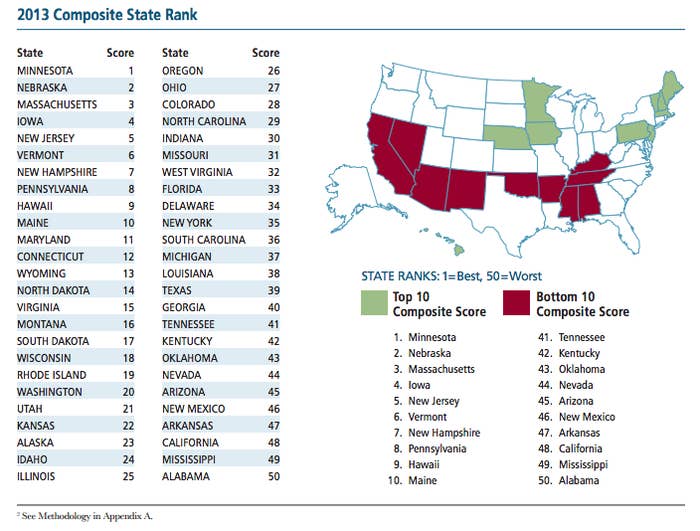The National Center on Family Homelessness published a study Monday that analyzed federal data from 2012 and 2013, finding that nearly 2.5 million children are currently homeless.

The center combined information on child homelessness from the U.S. Department of Education and the 2013 Census, finding an 8% increase across the country. Child homelessness has risen in 31 states and the District of Columbia; 10 states and the District of Columbia have experienced an increase of 10% or more.
The U.S. defines homelessness by a variety of factors. It counts people with a lack of "fixed, regular, adequate nighttime residence," people who have a residence that "provides temporary living arrangements (including hotels and motels)," and people who "will imminently lose their housing." At 2,483,539 (or one in 30 people under the age of 18), child homelessness is "an historic high," the report says.
The study also calculated state-specific scores on the conditions of child homelessness, taking into consideration the extent and risk of homelessness, the well-being of the child, and policy efforts to address homelessness. Based on the composite scores, which range from 1 to 50 (the higher score correlates with more threatening homelessness conditions), Minnesota received the best report card, while Alabama came in last.

The Associated Press pointed out California as a "particularly severe" state because it comprises one-eighth of the U.S. population, but accounts for one-fifth of all homeless child cases.
The non-profit National Center on Family Homelessness listed a number of contributing factors causing homelessness and its continued prevalence. In addition to poverty, a lack of affordable housing, and the ongoing recession, the center also said the unique challenges of single parenthood was a cause. Single mothers, for example, earned a median salary of $25,493 in 2012, which was one-third the income generated by two-parent families that year. These modest incomes have a significant impact on the ability to obtain secure housing.
"Single homeless mothers, notably those with young children, have little income, are un/underemployed, and often have high debt accumulation. Without adequate education, job skills, childcare and transportation, they are unable to enter the workforce, become self-sufficient and support their families," the report found.
The study also highlighted a racial disparity in child homelessness: In 2012, the U.S. Department of Housing and Urban Development found that while the black population comprises 12.5% of the national total, it accounts for 38% of all shelter residents. Data also found that "black children under five years of age were 29 times more likely than white children to be in emergency shelter."
Homelessness tends to affect other areas of children's lives, like physical and mental health and education. In light of the study, the National Center on Family Homelessness press release said, "up to 25% of homeless pre-school children have mental health problems requiring clinical evaluation; this increases to 40% among homeless school-age children. Many homeless children struggle in school, missing days and repeating grades until they drop out."
